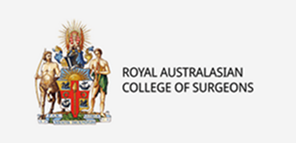- 0401 792 644

- 0401 792 644

The aim of Breast Conserving Surgery (BCS) is to remove a cancer or lump from the breast with a wide margin while maintaining the shape and appearance of the breast as much as possible. It is a highly effective approach and is often the preferred treatment for the majority of women with breast cancer.
Various surgical techniques and scar placements can be used to achieve the best cosmetic and cancer treatment outcomes. These range from the basic wide local excision (WLE) (sometimes called lumpectomy) to more complex oncoplastic procedures. A WLE involves surgically removing the cancer with a rim of normal breast tissue, followed by direct reapproximation of the surrounding tissue. Oncoplastic surgery combines cancer surgery with plastic surgery techniques to restore a natural breast shape, particularly after larger cancers are removed. This may involve reshaping the remaining breast using local tissue flaps or reduction/lift techniques.
To be suitable for BCS, the cancer must be small enough relative to the size of the breast to allow removal with a wide margin. BCS is always followed by radiotherapy, and the combination has been shown to provide survival outcomes equivalent to mastectomy.
Occasionally, WLE may not achieve a clear margin (~15% of cases) because microscopic cancer spread is more extensive than imaging suggested. Pathology results are typically available 5–7 days after surgery and will be reviewed at your follow-up appointment. If margins are not clear, the next steps may include further tissue removal or conversion to a mastectomy.
In some cases, WLE is combined with a breast reduction or lift to increase the likelihood of achieving clear margins. This combined approach is called a therapeutic mammaplasty and can enable breast preservation in patients who might otherwise require mastectomy. An added benefit of breast volume reduction in larger-breasted patients is reduced radiotherapy side effects.
In certain situations, chemotherapy or hormone therapy may be given before surgery (called neoadjuvant therapy) to shrink the tumour and increase the chances of successful breast-conserving surgery.
The treated breast is usually smaller. Most patients have a very good cosmetic result, with minimal scarring and only slight contour changes or indentations. The outcome depends on tumour position, surgery extent, individual factors (e.g., smoking), and the effects of radiotherapy. Although radiotherapy can affect tissue appearance, significant long-term changes are uncommon.
Lymph node surgery helps determine whether the cancer has spread beyond the breast and whether additional treatment such as radiotherapy or chemotherapy is needed. Sentinel node biopsy (SNB) involves removing one to three lymph nodes that are the most likely to contain cancer cells. These nodes are identified using a radioactive tracer and/or blue dye. If cancer is found in these nodes, a more extensive procedure known as axillary clearance, which removes all lymph nodes in the armpit, may be required.
The following steps are typical but may vary for each individual:
You will be admitted on the day of surgery. If your tumour cannot be felt, a wire may be inserted before surgery to guide its removal.
The operation typically lasts 1–3 hours. Patients undergoing standard WLE often return home the same day, if feeling well and supported. In many cases, an overnight hospital stay (1–2 nights) is recommended. Dissolving stitches are used, and a waterproof dressing will be applied. You may shower with the dressing on but should avoid rubbing or soaking the area. The dressing can be removed after 7 days. A supportive bra may be recommended day and night for several weeks.
Pain is usually mild and well managed with tablets. Discomfort may relate to removal of lymph nodes from the axilla (armpit) or chest wall, when such procedures are indicated. Normal activities can usually resume within a few days, but full recovery depends on surgery extent and any further treatments needed.
As with any surgery, risks exist. Serious complications are rare, but important to be aware of:
After lymph node surgery, patients may experience shoulder stiffness or arm discomfort. These symptoms typically resolve with physiotherapy and exercises, which will be initiated soon after surgery. A condition known as lymphoedema, which causes swelling of the arm, occurs in a minority of patients who undergo full axillary clearance. Scarring, nerve sensitivity, and changes in skin colour from blue dye are other possible side effects. Blue or green discolouration of urine or stool is harmless and temporary.



